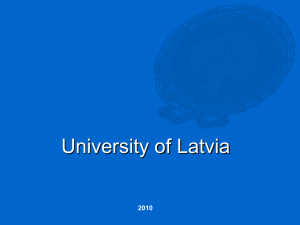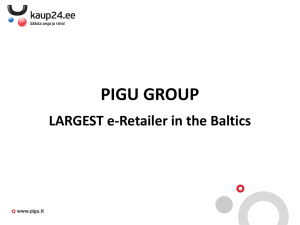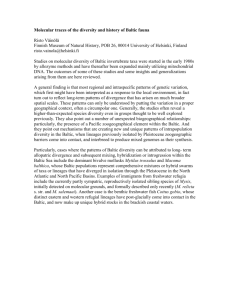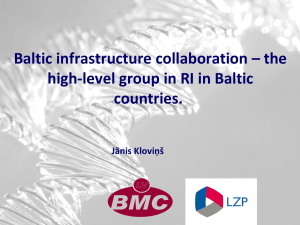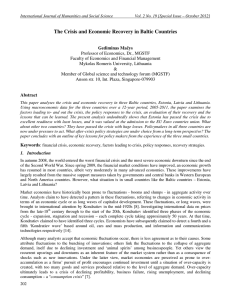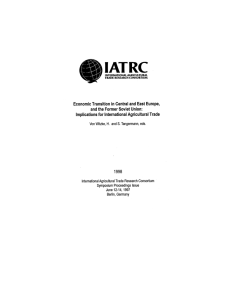latvia - Webnode
advertisement
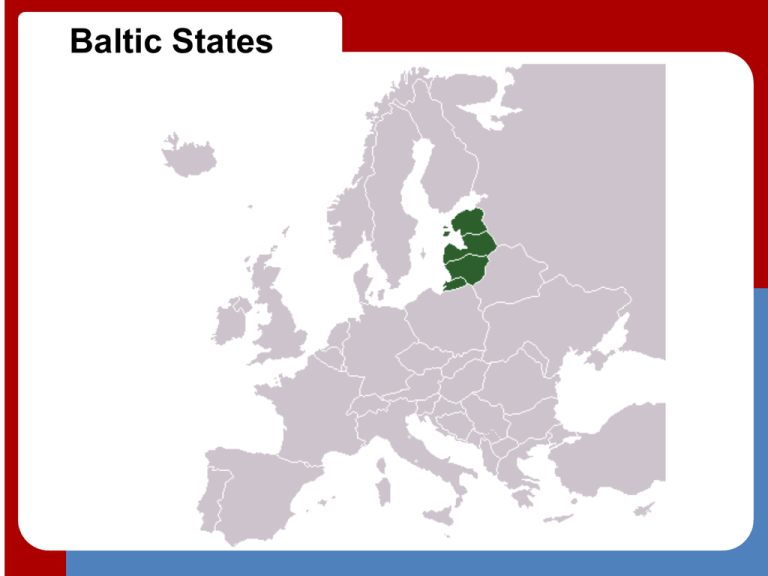
Baltic States Countries and their Capitals Estonia (Tallinn) Latvia (Riga) Lithuania (Vilnius) zxasxac General Informations Country Estonia Latvia Lithuania Area 45 227 km2 64 589 km2 65 300 km2 Population 1.3 million 2.3 million 3.4 million Government, Currency, Language and Religion Country Estonia Latvia Lithuania Form of Government Parliamentary Democracy Parliamentary Democracy Parliamentary Democracy Currency Euro Euro Euro Estonian Russian German English Latvian Russian German English Lithuanian Russian -English Lutheran, Catholic, Orthodox Lutheran, Catholic, Orthodox Catholic, Orthodox, Lutheran Language Religion Brief Recent History • 18th century – Russian Empire gained control • 1920 Baltic States became independent countries • 1940 Red Army occupied Baltic States • 1941 Nazi Germany occupied Baltic States • 1944 Red Army reoccupied Baltic States • After WWII, Baltic States became part of the Soviet Union • 1991 The former Soviet Union recognized the Baltic States as being independent • All of the Baltic States are now members of the EU ESTONIA is the first – and the smallest - of the three Baltic states. Estonia It is bordered on the east by Russia, on the south by Latvia, and on the west and north by the Baltic Sea. Estonia consists mostly of flat or gently rolling land. The highest point in Estonia is only 318 m above sea level. The 70% of the country comprises forest. There are two large islands and other smaller ones. Rivers are short, the Pärnu is the most important. There are more than 1400 small lakes. Lake Peipus forms part of the border with Russia. Estonia’s climate is cold continental, but tempered by the sea. Much of the cultivated land is devoted to such typical northern European crops as barley, wheat, rye (segale), potatoes, and flax (lino). Other land is planted with fodder. Machines and electronic items are the chief manufactured products. Also important are textile making, food processing, and the production of paper. Tallinn is the site of Estonia's chief commercial port and main airport. Tallinn and Pärnu are the chief fishing ports. Rail and road transportation in Estonia is well developed. The city was known as Reval from the 13th century until 1917. Tallinn's old town is placed on the UNESCO World Heritage List. LATVIA Latvia Latvia is the central country of the Baltic States. is bordered by Estonia to the north, Russia to the east, Lithuania to the south and the Baltic Sea to the west. Most of the land is flat but in some areas there are glacial hills, some reaching as much as (300 m) above sea level. There are many small glacial lakes. Latvia's largest river is the Western Dvina (or Daugava), which flows from Belarus to the Gulf of Riga. Latvia's climate is cold continental, but tempered by the sea. Forests provide timber. The main crops include oats, barley, rye, sugar beets, potatoes, and fodder. Bovine and swine breeding is also important, as well as fishing (especially of herrings) Major industries include the manufacturing of railway cars and locomotives, telephone equipment, scientific instruments, chemicals, and textiles. Other industries include shipbuilding, food processing and the manufacturing of paper and wood products. Riga, the capital, is the main industrial center. Latvia's rail and highway networks are extensive. Riga is a Baltic port and has the nation's largest airport. Most raw materials are imported. The capital of Latvia is Riga. Latvia’s political, economical and cultural centre. third of Latvia’s population lives and works in Riga. One LITHUANIA Lithuania is the third and the biggest of the three Baltic states. It is bordered by Latvia to the north, Belarus to the east, Poland and Russia to the south, the Baltic Sea to the west. The surface is generally flat and low. Glacial hills rise gradually to more than 270 m above sea level in the east. There are small glacial lakes. The Neman (or Nemunas) is the country's principal river. It flows from Belarus to the Baltic Sea. Because of the sea's tempering influence, Lithuania's climate is moderately continental. Winters are cold and summers are cool. Main crops include rye, barley, wheat, potatoes, sugar beet, and flax. Bovine and swine breeding is also important. Lithuania is especially noted for its production of meat and dairy products. The main manufactured products are machinery, precision instruments, chemicals, paper, plastics and textiles. The shipping, woodworking, electronics, and food-processing industries are also important. Rail and road transportation are well developed. There are 3 airports; Klaipeda is Lithuania's only seaport. Vilnius, the capital of Lithuania, was declared UNESCO World Heritage Site in 1994. For its big Jewish community, it was known as “the Jerusalem of Lithuania. A peninsula separating the Curonian Lagoon from the Baltic Sea The Curonian Lagoon between Lithuiania and the Kaliningrad oblast (part of Russia)
